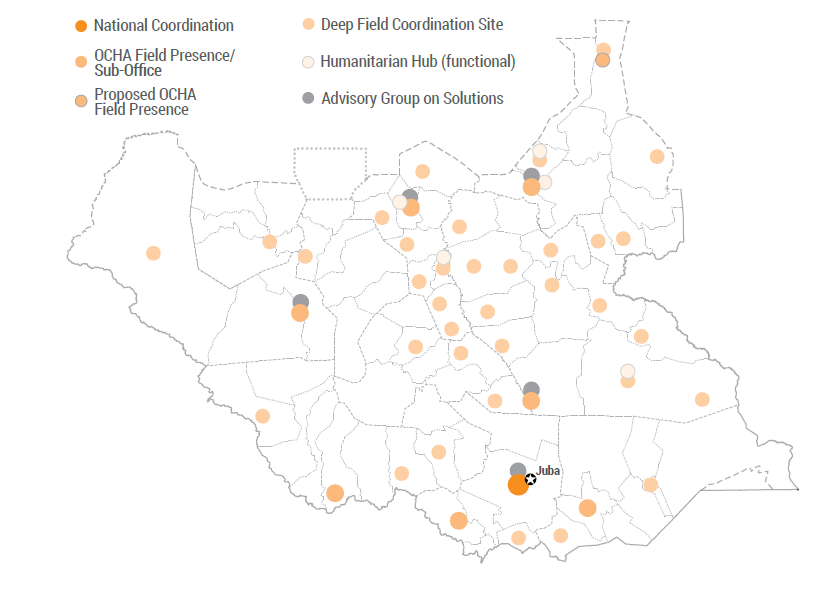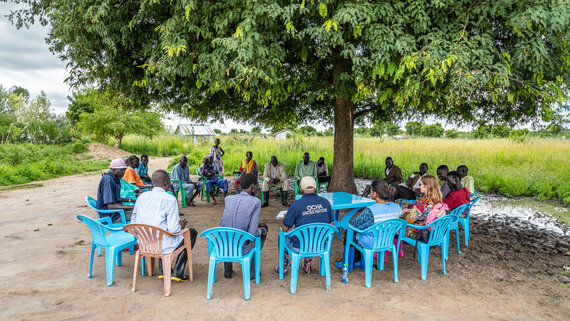
Objectives
The Coordination and Common Services (CCS) primary goal is establishing an efficient coordination mechanism that promotes a strategic, principled, evidence-based, and prioritized humanitarian response. CCS partners will actively engage in inter-sectoral needs assessments and analysis to guide response planning, negotiate access, and overcome bureaucratic hurdles to ensure a secure and timely operational environment. The sector provides non-programmatic cash coordination support and helps integrate key cross-cutting priorities, including AAP and localization into humanitarian actions.
Response
To achieve these objectives, the CCS Sector will focus on five key areas:
- Enhanced Coordination: This involves strengthening coordination through formal meetings, information sharing and joint needs analyses, driven by rigorous assessments that inform the humanitarian response;
- Strategic Response Planning: The sector aims to improve strategic response planning, ensuring principled and well-coordinated humanitarian actions;
- Monitoring Displacement: Timely monitoring of both new and historical displacement, return movements and the associated needs;
- Programme Effectiveness: Enhancing program efficiency and effectiveness by integrating cross-cutting issues and providing non-programmatic cash coordination support; and
- Humanitarian Transportation: Collaborating with authorities to facilitate onward transportation for incoming returnees from transit locations to final destinations, by river, air, road or a combination of modes.
A nationwide household-level Inter-Sectoral Needs Assessment (ISNA) will be carried out to facilitate evidence-based response planning in 2024. This assessment aims to understand people's needs and inform coordinated, multi-sectoral responses. Data will include sex- and age-disaggregated data and qualitative information. Rapid multi-sectoral assessments will be coordinated for emergencies, with data collected using appropriate methods, including smartphones and paper surveys.
The CCS Sector will continue to incorporate gender equality, age, disability, and conflict sensitivity across all stages of the response. Population movements, shocks (such as climatic, economic, and conflict-related), and biometric registration will inform the response. AAP will be central to the response, emphasizing systematic engagement with affected communities for a community-centered humanitarian approach. In line with a zero-tolerance approach to SEA, the sector supports advocacy for unhindered access to affected populations and the centrality of protection.
Advocacy will extend to the establishment of humanitarian hubs, which will serve as logistics bases, accommodations, and office facilities for humanitarian organizations, ensuring response coordination close to affected populations. Additionally, CCS partners will collaborate with authorities to facilitate the movement of incoming returnees from transit locations to final destinations using various modes of transport.
"We know that no-one should ask us for anything to receive assistance. I know what to do if someone approaches me in that way."
- 20 year old women in Juba IDP camp
Monitoring
A broad range of multi-sector assessments, including rapid, agency-led, REACH Area of Knowledge, Emergency Response Mechanism, and sectoral and Displacement Tracking Matrix site evaluations, will be systematically compared to identify trends in underlying vulnerabilities. This analysis will enable ongoing trend monitoring to track changes in needs over time. These insights will be regularly shared with the NAWG for continuous needs assessment. Furthermore, disaggregated by demographics, perception surveys will guide the creation of information products such as situation reports and humanitarian dashboards, enhancing decision-making regarding priorities, response strategies, and implementation gaps. Consolidating all these assessments into a database will facilitate effective monitoring and response coordination.
For more information on the cluster, please click here

Bor South County, Jonglei State
Community leaders engagement with partners to assess the humanitarian situation of vulnerable people.
OCHA/Alioune Ndiaye
